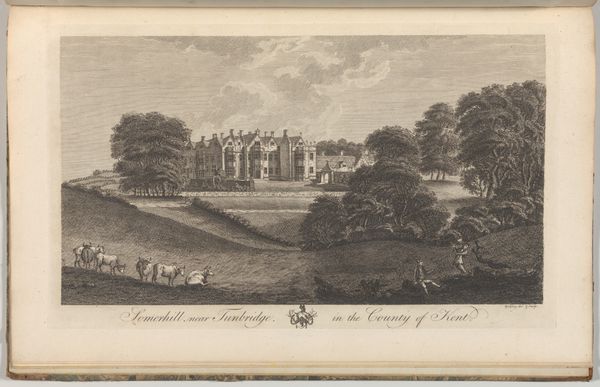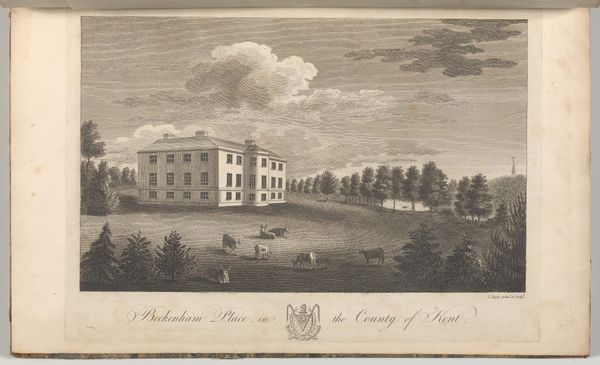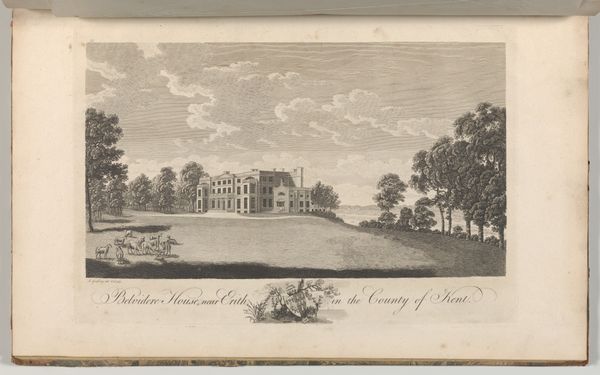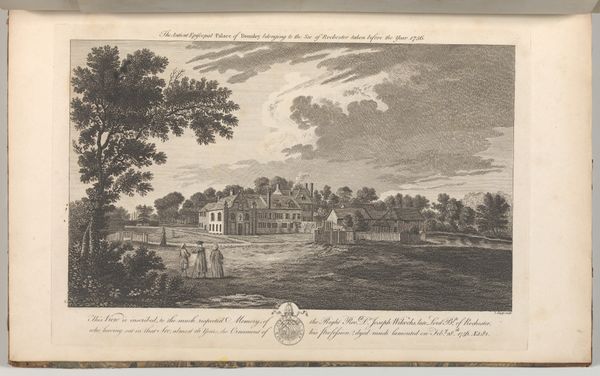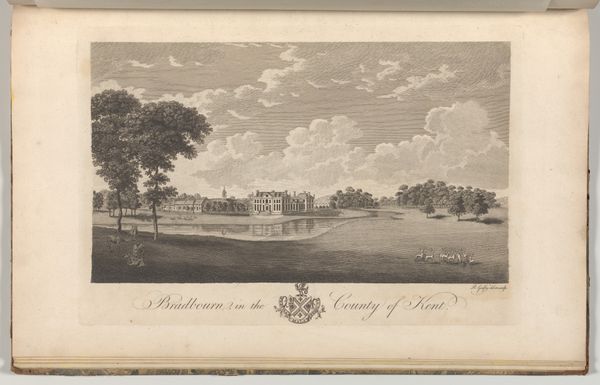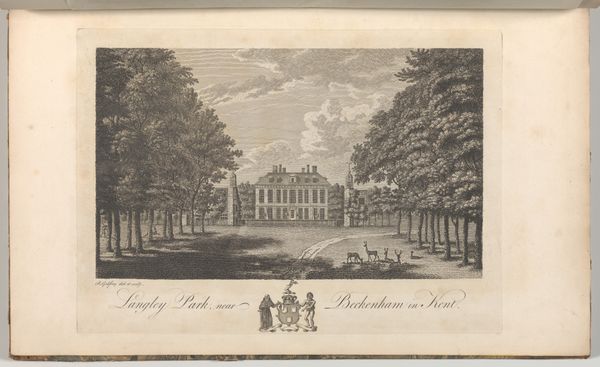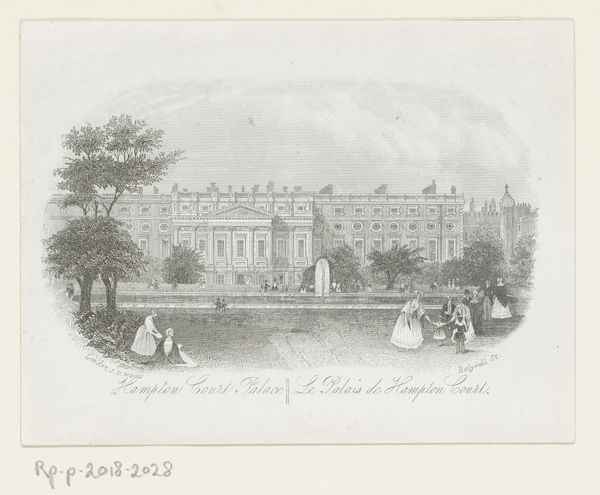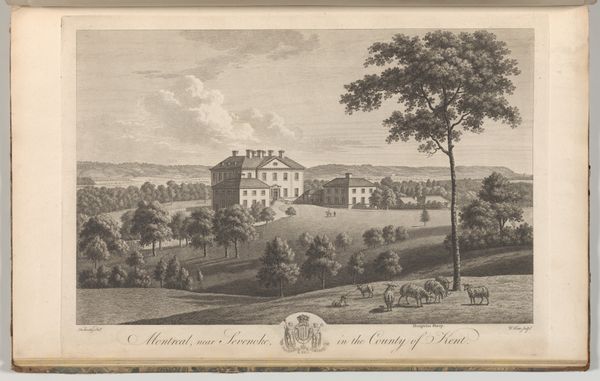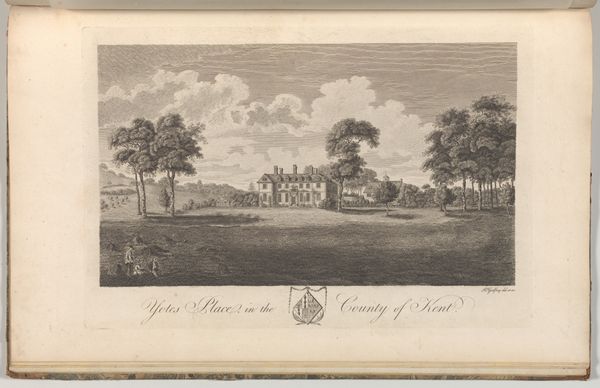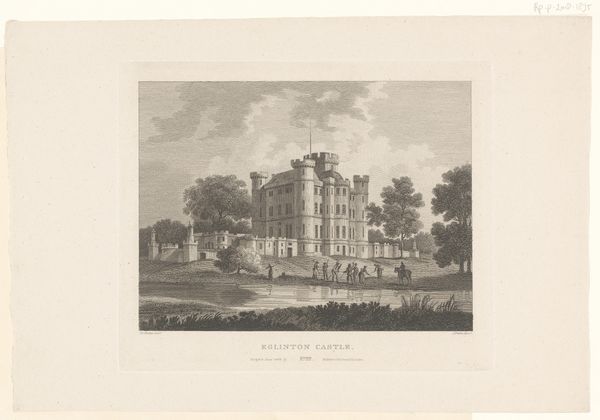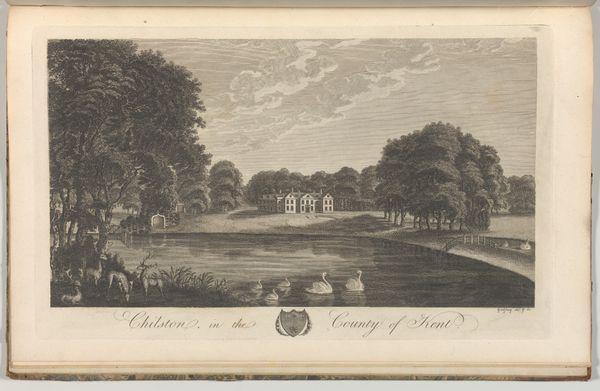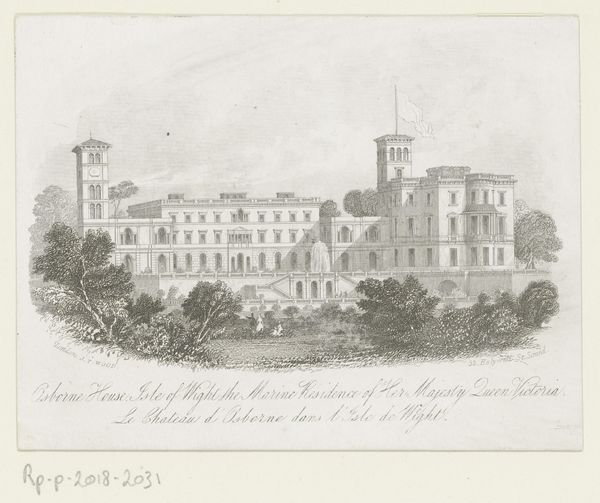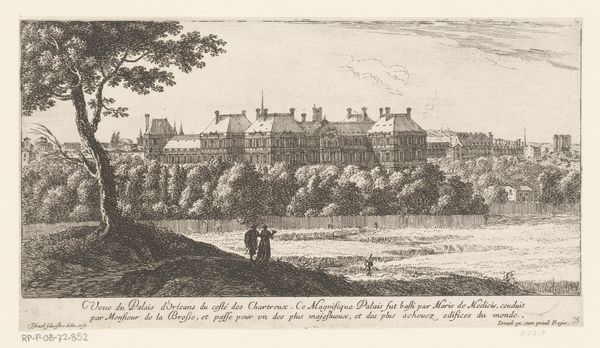
Knole, near Sevenoke, in the County of Kent, formerly a palace belonging to the Archiepiscopal See of Canterbury, from Edward Hasted's, The History and Topographical Survey of the County of Kent, vols. 1-3 1777 - 1790
0:00
0:00
drawing, print, engraving
#
drawing
#
neoclacissism
# print
#
landscape
#
coloured pencil
#
cityscape
#
history-painting
#
engraving
Dimensions: Book: 17 5/16 × 11 × 13/16 in. (44 × 28 × 2 cm) Sheet: 16 15/16 × 10 5/8 in. (43 × 27 cm) Plate: 10 1/16 × 14 in. (25.5 × 35.5 cm)
Copyright: Public Domain
Editor: So, this is “Knole, near Sevenoke, in the County of Kent…” It’s an engraving from between 1777 and 1790 by Richard Bernard Godfrey. It’s quite a detailed rendering of this estate… the precision of the lines makes me think about the labour involved. What do you see in it? Curator: It's compelling how Godfrey uses printmaking – a process often associated with mass production and distribution – to depict an exclusive aristocratic estate. Consider the labor invested: the engraver's meticulous work translating architectural details onto the plate. Isn't it fascinating how this "History Painting" – a celebration of a place laden with history and power– becomes accessible through this relatively democratic medium? What does it mean when the tools of knowledge sharing are being employed to monumentalize power structures? Editor: That's a great point about the democratizing aspect of printmaking being used to depict something so exclusive. The very act of reproduction alters its meaning. Is it meant to serve as promotion, or does it function more as a record for those with something to gain from its existence? Curator: Exactly! Consider too, the materials themselves – the paper, the ink. These aren't just neutral supports. Their production, distribution, and ultimate consumption by a specific audience are crucial. What social networks enabled this image to exist, to circulate, and be valued? Editor: I hadn't considered the material conditions so thoroughly before. It reframes the artwork to include social components. Curator: Precisely. By foregrounding the process, we reveal how even seemingly straightforward landscape depictions are products of complex relationships, power dynamics, and material exchanges. Editor: I think I’ll be focusing on process more from now on, paying more attention to the conditions which fostered its creation. Thanks!
Comments
No comments
Be the first to comment and join the conversation on the ultimate creative platform.
